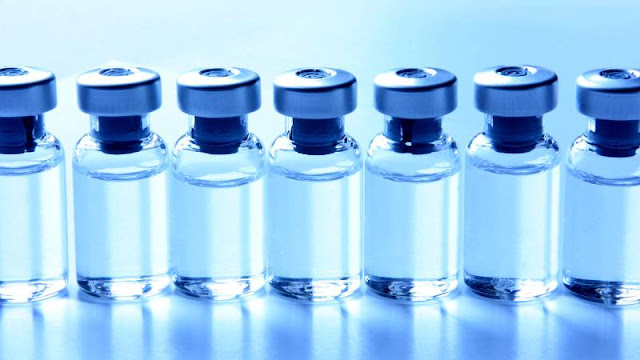role of micronutrients in skin health also function

Abstract
Skin is the primary line of protection for shielding our bodies towards external perturbations, including ultraviolet (UV) irradiation, mechanical/chemical stress, and bacterial infection. Nutrition is certainly one of many factors required for the protection of universal skin fitness. An impaired dietary status alters the structural integrity and organic feature of pores and skin, resulting in an ordinary skin barrier. In specific, the significance of micronutrients (along with sure nutrients and minerals) for skin fitness has been highlighted in cell lifestyle, animal, and scientific research. These micronutrients are employed now not best as active compounds in therapeutic agents for treating positive pores and skin sicknesses, however also as substances in cosmetic merchandise. Here, the author describes the barrier function of the pores and skin and the general nutritional requirements for skin health. The intention of this evaluate is to discuss the capability roles and present day understanding of selected micronutrients in pores and skin health and feature.
INTRODUCTION
The skin is self-possessed of two primary layers, dermis and
dermis (Fig. 1), and every layer famous particular structural and physiological
capabilities (Bouwstra et al., 2006; Thangapazham et al., 2014). Because the
dermis directly faces the outside environment, which include factors which
include UV irradiation, pathogens, and toxic insults, it on the whole
capabilities as a barrier (Elias and Feingold, 2006). The epidermis that is
positioned below the epidermis includes nerves, blood vessels, connective tissues,
hair follicle, and fibroblasts that are required for no longer handiest the
renovation of the structural foundation of the skin, but also for provision of
important biological capabilities (Bouwstra et al., 2006; Thangapazham et al.,
2014).
Structure of mammalian skin. Intact pores and skin of mouse
was subjected to hematoxylin and eosin (H&E)-staining. The pores and skin
includes two primary layers, epidermis and dermis. The innermost layer of
epidermis is the stratum corneum. Scale bar, 20 μm.
Nutritional popularity, dependent on both macro and
micronutrients, is crucial for pores and skin health (Boelsma et al., 2003;
Lakdawala et al., 2013). Proper dietary consumption complements endogenous
elements in regulating pores and skin barrier characteristic (Boelsma et al.,
2003; Lakdawala et al., 2013). Notable examples of nutrients are calcium and
diet C, which are responsible for the differentiation of keratinocytes, a
primary mobile kind in epidermis (Bikle et al., 2001; Uchida et al., 2001). A
decrease in nutritional repute can adjust the structural and biological
function of skin, resulting in pores and skin abnormalities, inclusive of dry
skin (Boelsma et al., 2003; Cosgrove et al., 2007; Lakdawala et al., 2013).
In this evaluate paper, the writer will describe briefly
numerous features of the epidermal barrier with a focal point on the position
of selected micronutrients in keeping pores and skin integrity.
SKIN BARRIER FUNCTION
Skin deploys multiple barrier functions; i.E.,
permeability-(Elias and Friend, 1975), antimicrobial- (Elias, 2007),
antioxidant- (Thiele et al., 2001), and UV-barrier (Thiele et al., 2001) (Table
1), to defend our bodies from external perturbants. The permeability barrier
prevents loss of excess water from nucleated layers of dermis and penetration
of harmful chemical substances, allergens, and pathogens into the dermis (Elias
and Friend, 1975). Of the more than one elements that make a contribution to
the renovation/development of the permeability barrier, a well-known cutaneous
lipid, ceramide, serves as a key constituent in epidermal membrane (Uchida and
Hamanaka, 2006). Since preservation of skin pH underneath 5.Five is critical
for suppressing virulent microbial pathogen growth, consisting of
Staphylococcus aureus, skin acidification is critical in improving the
antimicrobial barrier (Elias, 2007). In addition to acidification,
antimicrobial barrier characteristic may be stepped forward through the action
of antimicrobial peptides, that are expressed in epidermal keratinocytes to
kill invaded microbial pathogens (Park et al., 2011; Park et al., 2013b). A
wide variety of antioxidant chemical compounds, consisting of vitamin C, are
gift within the skin (Thiele et al., 2001). These anti-oxidants keep skin
homeostasis; i.E., safety of proteins/lipids from oxidation (Tyrrell and Keyse,
1990; Thiele et al., 2001). The have an impact on of UV irradiation depends
upon the shape of cell additives. Urocanic acid, that is generated from
histidine in pores and skin, is a mighty, endogenous UV absorbent (Barresi et
al., 2011). In addition, exogenous nutrients, such as α-tocopherol, β-carotene,
lycopene, and lutein, may want to make a contribution to forming the UV barrier
thru enzymatic and non-enzymatic mechanisms (Thiele, 2001; Eichler et al.,
2002; Larsson et al., 2006; Evans and Johnson, 2010).
Table 1.
Cutaneous barrier features
GENERAL NUTRITION REQUIREMENTS FOR SKIN HEALTH
Glucose is the primary source of energy for maximum
mammalian cells, including keratinocytes (Spravchikov et al., 2001). It
provides the carbohydrate backbone for glycosylation of proteins/lipids that
include the extracellular surroundings of the pores and skin, suggesting that
altered stages of glucose in pores and skin may additionally reason structural
modifications and bizarre barrier functions (Halprin and Ohkawara, 1966; Van
Hattem et al., 2008). High glucose awareness has been reported to growth
proliferation in MCF-7 breast most cancers cells (Yamamoto et al., 1999), renal
cortical fibroblasts (Han et al., 1999), and SV40 transformed human corneal
epithelium (McDermott et al., 1998). However, excessive glucose also has been
proven to inhibit proliferation in epidermal keratinocytes (Spravchikov et al.,
2001) and dermal fibroblasts (Hehenberger et al., 1998) (Table 2), suggesting
that a role for glucose in law of mobile proliferation seems to be
mobile/tissue specific. In studies conducted to assess the effects of glucose
on differentiation, excessive ranges of glucose appreciably enhanced
calcium-precipitated keratinocyte differentiation, whilst their proliferation
turned into glaringly inhibited (Spravchikov et al., 2001) (Table 2). Because a
well-balanced proliferation and differentiation method is one of the indispensable
steps in wound healing, excessive glucose levels may make a contribution to
impaired wound healing in sure sicknesses, which include diabetes (Spravchikov
et al., 2001).
Table 2.
Role of macronutrients in pores and skin health and characteristic
UV irradiation has been suggested as a robust force in skin
ageing (see information in Vitamin C segment) (Takema et al., 1996). Collagen
is a primary constituent of epidermis and is essential to preserve skin
structure (Takema et al., 1996); and exposure to extra UV irradiation
dramatically decreases dermal collagen content, ensuing in skin getting older
or behind schedule wound recovery (Takema et al., 1996). Several amino acids
had been shown to save you pores and skin growing older through their
stimulation of dermal collagen synthesis. Proline and its precursors,
glutamate, extensively boom collagen synthesis in human dermal fibroblasts
(Karna et al., 2001) (Table 2). While nitric oxide (NO) generated through
dermal fibroblasts induces collagen synthesis, a few amino acids, e.G.,
arginine (Stechmiller et al., 2005), ornithine (Shi et al., 2002), and amino
acid combos from Mytilus galloprovincialis and Rapana venosa extracts (Badiu et
al., 2010), boost up wound restoration thru increased dermal collagen produced
through iNOS/NO-structured mechanisms (Table 2). Moreover, recent research
advise that nutritional silk protein, sericin, improves epidermal hydration in
parallel with increased degrees of filaggrin in an animal version of atopic
dermatitis (AD) (Kim et al., 2012) (Table 2). These consequences imply that
amino acids no longer only guard pores and skin against UV irradiation-mediated
damages, such as skin getting older and delayed wound recuperation, but amino
acid dietary supplements might be useful for treatment of certain pores and
skin diseases together with AD.
Major epidermal lipids consist of ceramide, ldl cholesterol,
and fatty acids (Uchida and Hamanaka, 2006; Uchida, 2014). Particularly,
ceramide is a key lipid constituent of the epidermal permeability barrier
within the extracellular domain of the stratum corneum (Uchida and Hamanaka,
2006; Uchida, 2014) (Table 2). Ceramide and its metabolites also offer
signaling roles in modulating a couple of cell functions, e.G., proliferation,
differentiation, and apoptosis in epidermal keratinocytes (Uchida and Hamanaka,
2006; Uchida, 2014). While cellular ceramide manufacturing is elevated in
keratinocytes following UV irradiation, high doses (toxic level) of UVB
irradiation result in mobile apoptosis/dying (Uchida et al., 2010). Whereas,
subtoxic tiers of ceramide, brought on by using low dose of UVB irradiation,
may be restored to everyday ranges due to its metabolic conversion into
non-apoptotic ceramide metabolites, which make a contribution to protective
cells in opposition to ceramide-induced apoptosis (Uchida et al., 2010) (Table
2). In addition, preceding research confirmed that decreases in ceramide tiers
occur in positive pores and skin diseases related to permeability barrier
abnormality; i.E., atopic dermatitis and psoriasis (Yamamoto et al., 1991;
Motta et al., 1994). Moreover, our current studies verified that the key
ceramide metabolites, ceramide-1-phosphate and sphingosine-1-phosphate,
produced in human keratinocytes in reaction to subtoxic levels of endoplasmic
reticulum (ER) strain stimulate manufacturing of predominant epidermal innate
immune elements (beta-defensins and cathelicidin antimicrobial peptide) thru
STAT1/3- or NF-κB-established mechanisms, respectively (Park et al., 2013a; Kim
et al., 2014) (Table 2).
IMPORTANCE OF KEY MICRONUTRIENTS IN MAINTAINING SKIN HEALTH
Since Dr. James Lind defined the significance of nutrition C
within the maintenance of pores and skin health (Bartholomew, 2002), different
investigators have studied skin abnormalities/sicknesses because of diet
deficiencies, along with scurvy and pellagra, which can be corrected with
appropriate oral and/or topical diet supplementation.
Vitamin A
Vitamin A is a set of unsaturated nutritional natural compounds. Vitamin A and its derivatives, e.G., retinoids and carotenoids, play an essential position in regulating proliferation, differentiation, and apoptosis of different mobile types, including skin cells (Elias et al., 1981; Goodman, 1984; Lee et al., 2009). Retinoids are ordinarily located in animal resources, while provitamin A carotenoids, which includes β-carotene, are located in plant merchandise (Goodman, 1984). While the useful results of carotenoids are idea to be because of their position as antioxidants, carotenoids first need to be transformed to retinoid paperwork to offer physiological functionalities in skin (Johnson, 2002). Retinoids particularly mediate their feature via nuclear hormone receptors (Fig. 2): the retinoic acid receptors (RARs) and the retinoid X receptors (RXRs), every with 3 isotypes (α, β, and γ) (Elder et al., 1991; Gann et al., 1996). These receptors form heterodimers (RAR/RXR) or homodimers (RXR/RXR) after activation by means of selective retinoids. These dimers bind consensus DNA regions (referred to as retinoic acid response elements [RARE] or retinoid X response factors [RXRE]), positioned inside the promoter of goal genes, which mediate transcriptional regulation (Njar et al., 2006). Since epidermal keratinocytes and dermal fibroblasts express both retinoid receptors (Elder et al., 1991), pores and skin is considered as one of the predominant retinoid-responsive tissues. Retinoids exert results within the pores and skin through more than one mechanisms (Fig. 2): 1) regulating expression of epidermal structural and practical genes through direct binding to RARs and/or RXRs (Tomic-Canic et al., 1996; Radoja et al., 1997); 2) modulating pores and skin-related genes by way of interfering with the signaling of different transcriptional factors after receptor binding (Lee et al., 2005). Previous investigations have proven that retinoids ought to beautify repair of UV irradiation-damaged pores and skin via following mechanisms (Table 3); i.E., 1) their potential to growth proliferation of epidermal keratinocytes and dermal fibroblasts (Varani et al., 1994); 2) inhibiting the expression of matrix metalloproteinases (MMPs), matrix-degrading enzymes, main to elevated typical protein and extracellular matrix content material (Fisher et al., 1997). In evaluation, any other studies established that retinoids modulate epidermal proliferation with anti-proliferative capability in hyper-proliferative skin which include psoriasis (van de Kerkhof, 2006; Jean et al., 2011). Hence, the role of retinoids in law of epidermal proliferation can be ailment/strain precise (ordinary pores and skin vs. Psoriasis) and/or different expression profiles of unknown cofactors required for biological movement of retinoids. Moreover, retinoids also have large potential in the prevention and remedy of other pores and skin sicknesses, such as ichthyosis (van Steensel, 2007), skin most cancers (Niles, 2002), and pimples (Kligman, 1997). In particular, topical all-trans-retinoic acid is a secure and powerful remedy for moderate to mild zits, whilst oral thirteen-cisretinoic acid (isotretinoin) is used to deal with intense zits that is proof against topical treatments (Kligman, 1997; Verfaille et al., 2008). More current outcomes from clinical studies showed the extensively reduced retinoid concentration and dysregulated retinoid-signaling pathway within the skin of patients with atopic dermatitis (AD) (Mihaly et al., 2011) (Table four), suggesting that strange retinoid activity might contribute to pathogenesis of AD. Vitamin A deficiency is likewise associated with behind schedule wound recovery (Hunt, 1986) (Table four). However, extended topical/oral remedy with vitamin A can motive undesirable aspect results, inclusive of retinoid dermatitis that is characterised via erythema, dryness, scaling, pruritus, and variable degrees of inflammation (Voorhees, 1990; Mukherjee et al., 2006).


